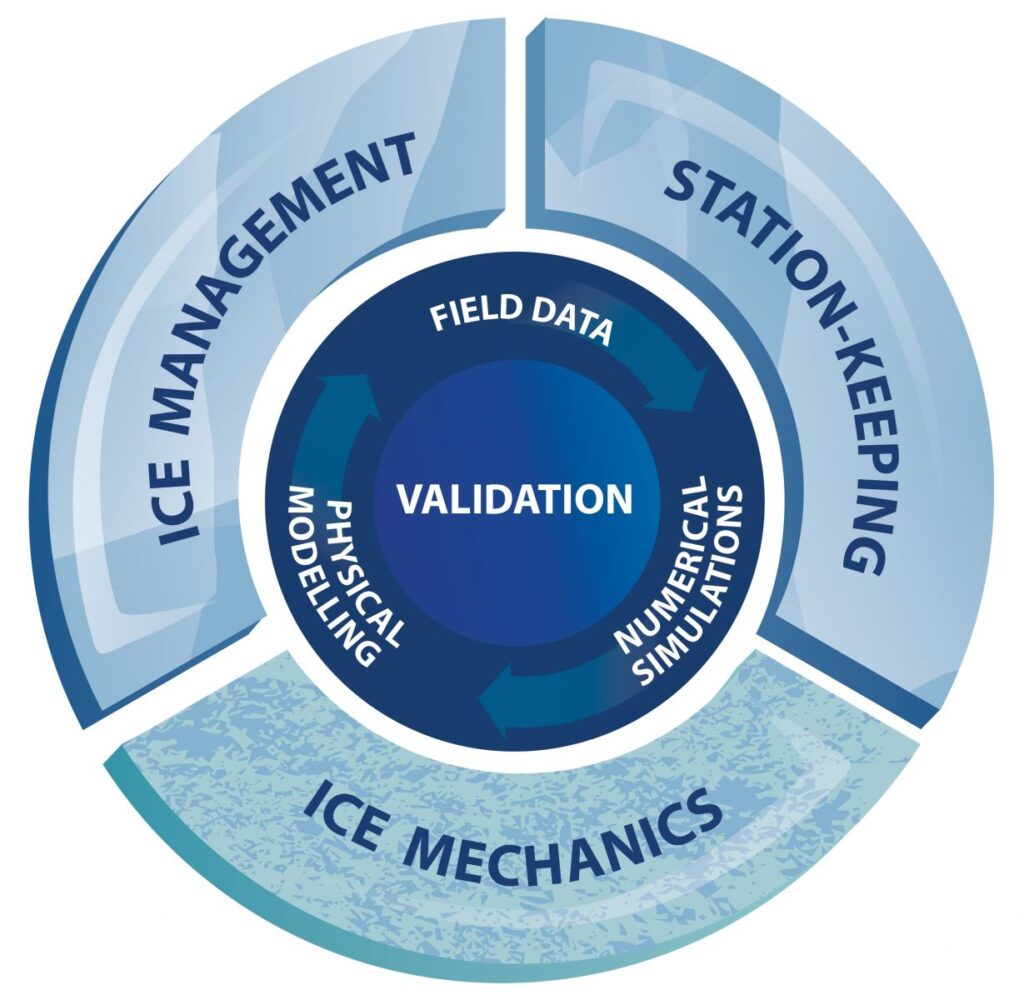Based on the Arctic Development Roadmap, CARD’s first Five-Year Research and Development Plan had three streams: Ice Mechanics; Sea-Ice Management; and Station Keeping in Ice. These were united by the Centre’s three fundamental research approaches: field data collection, a programme of physical modelling and large-scale experiments, and numerical/computer simulations.

The approaches used in CARD in the study of ice (field observations and experiments, model/lab testing, and numerical modelling) complement each other in helping CARD carry out its mission. Field observations and experiments provide the raw data on which all models must be based; they are the ultimate sieve in the development of valid models, but field data was necessarily sparse and expensive to obtain. Model and laboratory tests are less expensive than field work, but they require specialized facilities and care in conception and design, and can be difficult to scale. Numerical simulations depend for their accuracy on the applicability of the fundamental equations or models used. However, they are much less expensive than model/lab tests, and can be used to output data from otherwise inaccessible points inside, under, or behind a structure or ice sample. Some processes, such as dynamic re-crystallization and the effects of high pressure zones on large-scale ice behaviour, cannot be adequately studied without numerical modelling. It was through integrated use of all of these approaches that CARD achieved a more complete understanding of ice–structure interaction.